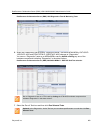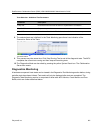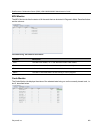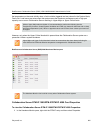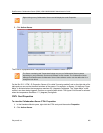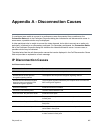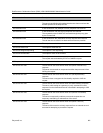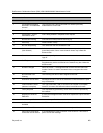
Polycom®, Inc. 857
Appendix A - Disconnection Causes
If a participant was unable to connect to a conference or was disconnected from a conference, the
Connection Status tab in the Participant Properties dialog box indicates the call disconnection cause. In
some cases, a possible solution may be displayed.
A video participant who is unable to connect the video channels, but is able to connect as an audio only
participant, is referred to as a Secondary participant. For Secondary participants, the Connection Status
tab in the Participant Properties dialog box indicates the video disconnection cause. In some cases, a
possible solution may be indicated.
The table below lists the call disconnection causes that can be displayed in the Call Disconnection Cause
field and provides an explanation of each message
IP Disconnection Causes
Call Disconnection Causes
Disconnection Cause Description
Disconnected by User The user disconnected the endpoint from the conference.
Remote device did not open the
encryption signaling channel
The endpoint did not open the encryption signaling channel.
Remote devices selected encryption
algorithm does not match the local
selected encryption algorithm
The encryption algorithm selected by the endpoint does not match the
MCU's encryption algorithm.
Resources deficiency Insufficient resources available.
Call close. Call closed by MCU The MCU disconnected the call.
H323 call close. No port left for audio Insufficient audio ports.
H323 call close. No port left for video The required video ports exceed the number of ports allocated to video
in fixed ports.
H323 call close. No port left for FECC The required data ports exceed the number of ports allocated to data in
fixed ports.
H323 call close. No control port left The required control ports exceed the number of ports allocated to
control data in fixed ports.
H323 call close. No port left for videocont The required video content ports exceed the number of ports allocated
to video content in fixed ports.



